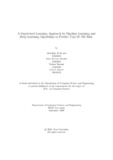| dc.contributor.advisor | Chakrabarty, Amitabha | |
| dc.contributor.author | Farabe, Abdullah Al | |
| dc.contributor.author | Sharika, Tarin Sultana | |
| dc.contributor.author | Raonak, Nahian | |
| dc.contributor.author | Ashraf, Ghalib | |
| dc.date.accessioned | 2021-07-06T16:11:00Z | |
| dc.date.available | 2021-07-06T16:11:00Z | |
| dc.date.copyright | 2019 | |
| dc.date.issued | 2019-09 | |
| dc.identifier.other | ID 15101081 | |
| dc.identifier.other | ID 15301131 | |
| dc.identifier.other | ID 15301109 | |
| dc.identifier.other | ID 19141023 | |
| dc.identifier.uri | http://hdl.handle.net/10361/14745 | |
| dc.description | This thesis is submitted in partial fulfillment of the requirements for the degree of Bachelor of Science in Computer Science and Engineering, 2019. | en_US |
| dc.description | Cataloged from PDF version of thesis. | |
| dc.description | Includes bibliographical references (pages 39-41). | |
| dc.description.abstract | The application of Arti cial intelligence (AI) has become a valuable part of medical
research. These days diabetes is one of the top maladies on the planet. Nowadays
it has become a common disease and alarming as people are living in polluted areas
and eating unhygienic foods. People with diabetes are probably going to pass on at
a more youthful age than individuals who don't have diabetes. We hope this study
could be very helpful in medical science to predict the risk score of type II Diabetes
Mellitus (DM). Our model consists of four machine learning algorithms which are-
K-Nearest Neighbor, Random forest, Decision tree and Logistic Regression. These
algorithms have been applied on a dataset containing 15000 type 2 diabetes patients
along with eight features that describe the state of patients such as glucose, BMI,
age, pregnancy, blood pressure (BP), Diabetes Pedigree Function, Skin thickness
and insulin. Moreover, one deep learning algorithm called CNN has been used. All
of the ve algorithms have been used on the dataset and the Random forest gives
the best accuracy of almost 92.60 percent where other algorithms give less accuracy. | en_US |
| dc.description.statementofresponsibility | Abdullah Al Farabe | |
| dc.description.statementofresponsibility | Tarin Sultana Sharika | |
| dc.description.statementofresponsibility | Nahian Raonak | |
| dc.description.statementofresponsibility | Ghalib Ashraf | |
| dc.format.extent | 41 pages | |
| dc.language.iso | en | en_US |
| dc.publisher | Brac University | en_US |
| dc.rights | Brac University theses are protected by copyright. They may be viewed from this source for any purpose, but reproduction or distribution in any format is prohibited without written permission. | |
| dc.subject | Linear Discriminant Analysis (LDA) | en_US |
| dc.subject | Logistic regression | en_US |
| dc.subject | Random forest | en_US |
| dc.subject | Decision tree | en_US |
| dc.subject | KNN and CNN | en_US |
| dc.subject.lcsh | Machine learning. | |
| dc.subject.lcsh | Computer algorithms. | |
| dc.title | A supervised learning approach by machine learning and deep learning algorithms to predict type II DM risk | en_US |
| dc.type | Thesis | en_US |
| dc.contributor.department | Department of Computer Science and Engineering, Brac University | |
| dc.description.degree | B. Computer Science | |

